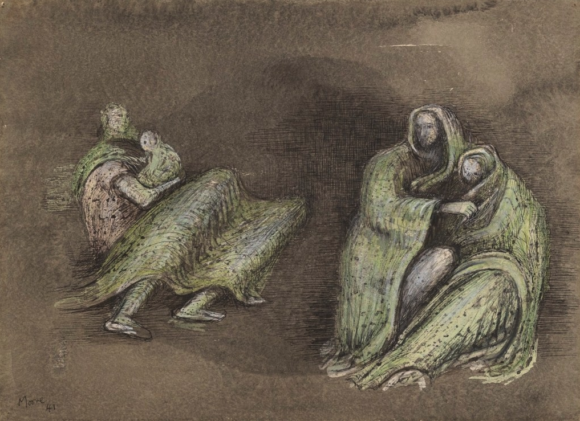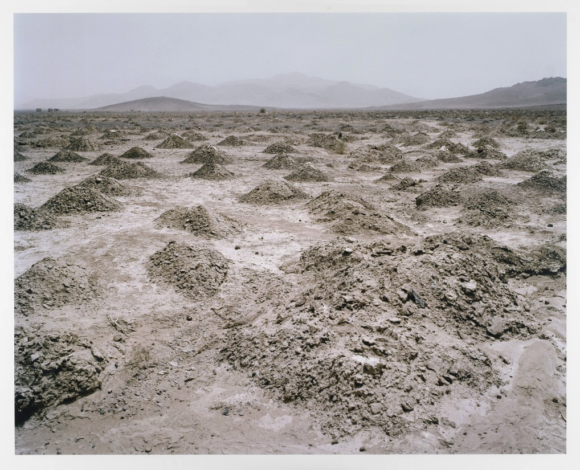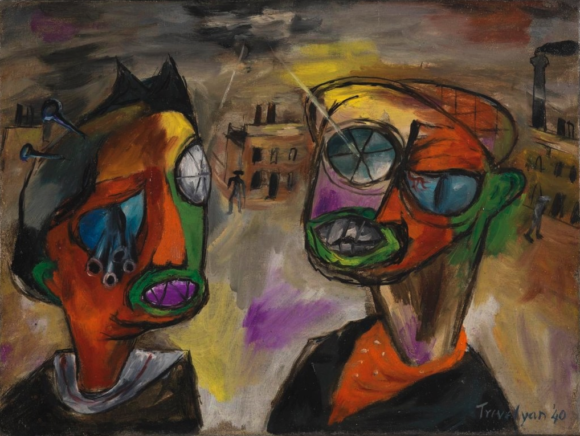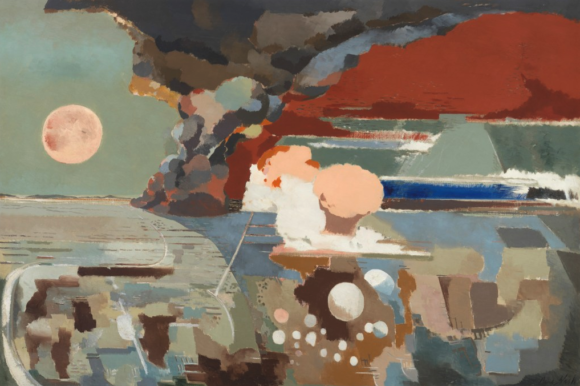Short of actually starting the Third World War it’s difficult to see how the fates could better have prepared the ground for the opening this week of the Blavatnik galleries at the Imperial War Museum. With the globe on fire on two fronts, the contents of these art-filled new spaces suddenly feel especially visceral and scary. Extreme pertinence has been forced upon the museum.
I’ve never been a fan of this spooky institution. What’s it for? With two giant guns pointing straight at us at its entrance and a vestibule packed with sexy military hardware of the kind that little boys like to rebuild in Airfix kits, it has always felt like a location searching for seriousness. Yes, school kids love to jump in and out of its repurposed tanks or take the controls of the pretend fighter capsules, but is this a place that regrets war or glorifies it? The “Imperial” in its title ceased to feel comfortable many battles ago. If we trek out to Kennington and run the gun gauntlet, what are we learning?
Those were my questions. They aren’t any more. The Blavatnik galleries have put the confusion to bed. Devoted to art, film and photography, the potent new spaces transmit their gravitas and sincerity to all the museum’s corners. Institutions, individuals, governments and nations may sometimes have misunderstood the tenor and meaning of war. But art, on this stirring evidence, never has. Art is war’s most truthful witness.

The museum has always had a big art collection. Previously, though, there was nowhere to show it. Once the decommissioned tanks and fighter planes were crammed into the building there was no space left for aesthetics. Scattered about the museum, adding tiny flavours here and there, the art collection has never said anything substantial.
The new spaces of the Blavatnik galleries right this wrong. Mixing highlights from the art holdings with a heartbreaking selection of war zone photography and two mini cinemas — one playing artists’ films, the other playing documentaries — there is enough engrossing material on display here to keep you sobbing for a week.

We start with a dark smorgasbord of images drawn from the many conflicts since the foundation of the museum in 1917. In that same year Frank Hurley photographed the desolation at Passchendaele where the stumps of dead trees poked out of the mud like the remains of a slaughtered beast. In 1937, in a bright blue poster, Joan Miró asked us to help his nation to fight the Spanish civil war. In 2002 Paul Seawright went to Afghanistan and photographed the seemingly endless landscape of molehills created by a Taliban minefield.
Like war itself, war art takes many forms. Sometimes it is the description of the horrors that hits home. The emaciated bodies witnessed by Doris Zinkeisen, the first artist to enter the Bergen-Belsen concentration camp in 1945, are grotesquely skeletal and white, thrown out of the death huts like discarded rubbish. But war art doesn’t always need to detail the terror to be effective. Walter Sickert’s Tipperary, painted in 1914, shows a woman at a piano in one of those gloomy Sickert interiors in which you can smell the must. The painting is silent, but the mournful notes counting the miles to Tipperary are as audible as a party next door.

Cleverly and effectively, the display mixes documentary material and art. The photographs, timelines and letters keep us grounded in the facts. The art burrows into us and fires our imaginations. Edward Burra’s Blue Baby, Blitz over Britain, from 1941, envisions the aerial assault on Britain as a monstrous blue raptor flapping over the land. Julian Trevelyan’s Premonitions of the Blitz, from 1940, uses bright splodges of surrealist colour to turn human heads into angsty voodoo masks.
Divided into fuzzy sections, with lots of overlaps — one dealing with the landscape of war, another with war’s impact on the mind and body, a third dwelling on propaganda — the new galleries try their best to bring logic and shape to their grim storyline. Where they do have tangible success is in tracing the changes in the location and form of warfare.
Thus, from the First World War onwards, the sky became a battleground. From high above the Earth the view that artists had of war enlarged to cosmic dimensions. Paul Nash’s Battle of Germany, from 1944, records the nocturnal bombardment of a German city, but with its clouds of amorphous smoke and bed-quilt patterns on the land below, this fundamentally modern image teeters on the verge of full abstraction.

More recently war has become a deadly video game in which the human presence feels unsettlingly reduced. That’s what Navine Dossos conveys in The Messenger and the Message, a grid of Islamic symbols mixed with Twitter logos and signage from the combined task force in Syria, arranged in board game fashion like a lethal version of Monopoly.
All this is fascinating, sad, dark and telling. Some images burst through the cloud of despair like howitzer shells. John Singer Sargent’s Gassed, from 1919, has a frieze of mustard-gassed soldiers staggering across its foreground and a team of surviving Tommies playing out a hopeless game of football in the background. Two wartime realities, battling for the truth, in a single masterpiece.
With the opening of the Blavatnik galleries, the Imperial War Museum has achieved extreme pertinence. It has also proved that war is one of art’s great subjects.
